This is a reissue of a post written years ago because the recipe link in the original is no longer “live”. We have written out the recipe (see below) and expanded and updated the wine pairings.
It’s early January and cold and gray in most parts of the northern hemisphere. When we can’t secure passage to warmer climes, we begin to think about foods that will warm the soul and thereby brighten the mood. We’ve got just the ticket: Julia Child’s Leek & Potato Soup.
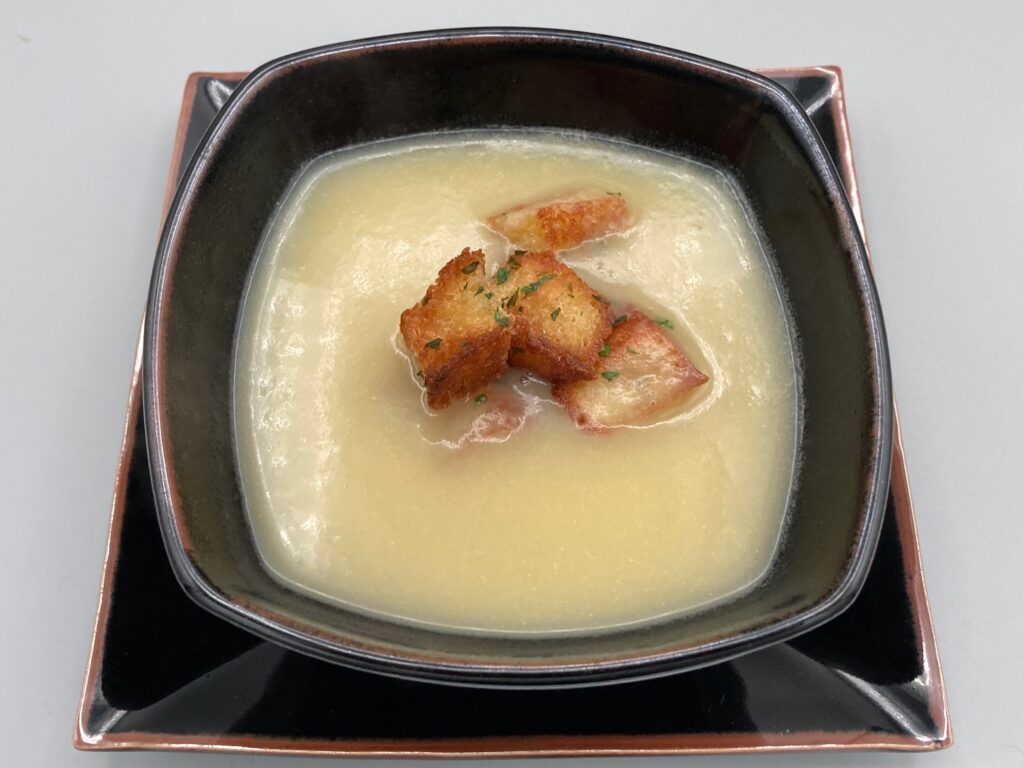
This recipe is from Julia’s Mastering the Art of French Cooking, Vol. 1 and is remarkably simple to prepare. Having made this recipe countless times, we would like to provide a little guidance: use Yukon Gold potatoes; don’t try to substitute chicken broth for the water; water is lighter and allows the veggies to shine; blend at a high speed, but not for too long – the soup gets thicker the longer you blend at a high speed – not exactly sure why this is. Our suspicion is that prolonged high-speed blending causes excessive cell damage, starch release and glueyness.
Think of this as winter lunch fare, or an ideal starter for a classic French dinner like Coq Au Vin or Filet Mignon with Green Peppercorn Sauce. The recipe also serves as a base for a number of variations. For example, an American version of Vichyssoise can be make by stirring in 1 cup of heavy cream into the cooked soup, chilling it, and sprinkling on cut chives just prior to serving. Water-cress Soup is another variation; details can be found in the Notes section of the recipe below.
Wine Pairing
Our first thought was to reach for a wine that would match the weight and creaminess of the soup. A Cotes du Rhone Blanc, perhaps; or an Italian Fiano. We found these wines to be less than ideal – too much like the soup. Boring pairings. This recipe called out for a contrasting wine – one with more acidity and less weight. Not unlike chasing some French fries with a palate-cleanser, like beer or soft drink. Chardonnay seemed like an ideal pairing; but it also raised questions: old-world or new-world Chardonnay? Oaked or unoaked? Here are some styles and producers we considered:
Flowers Chardonnay, Sonoma Coast CA, 2023 (~ $40)
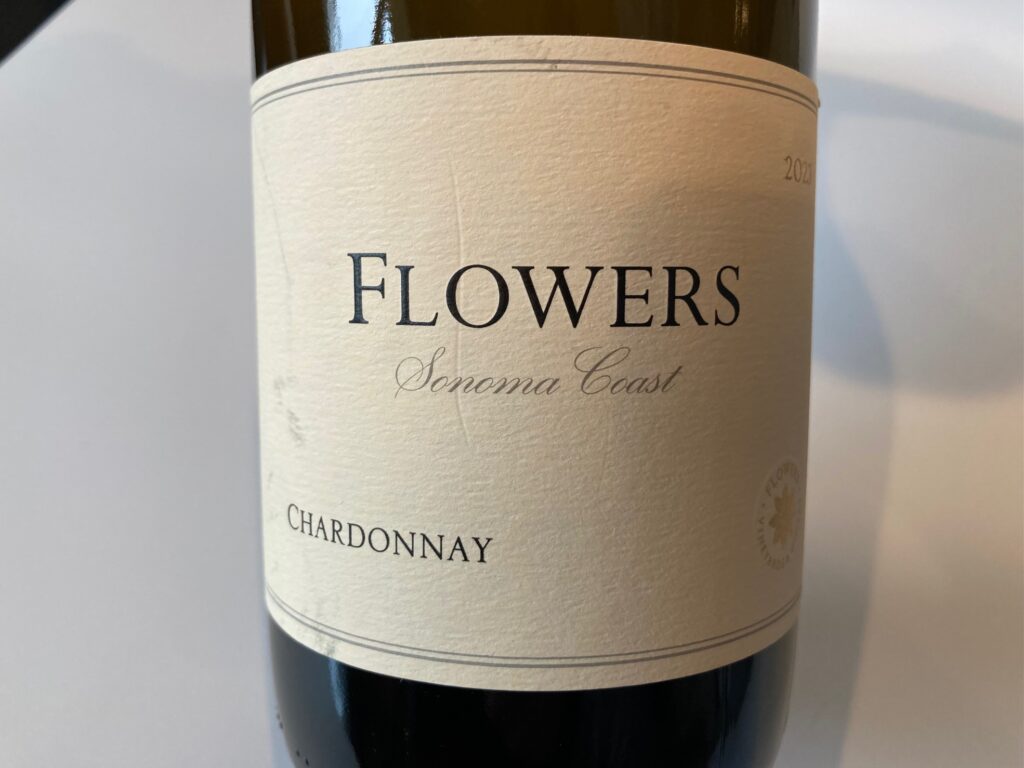

This widely-available wine showcases what Chardonnay can deliver when organically farmed in the coastal reaches of Northern California where, during the growing season, sunshine abounds, and cool, damp nights are commonplace. Eighty percent of the fruit is fermented in barrels, 20% in stainless steel; aging takes place in French oak (18% new). Unlike many heavier Chardonnays from Napa and inland Sonoma, this wine reflects the use of (mostly) neutral oak balanced with the citrus and minerality one expects from coastal mountain vineyards. A lovely expression of Chardonnay from California.
Domaine du Clos du Rocs Mâcon-Loché En Près Forêt FR 2023 (~ $28)
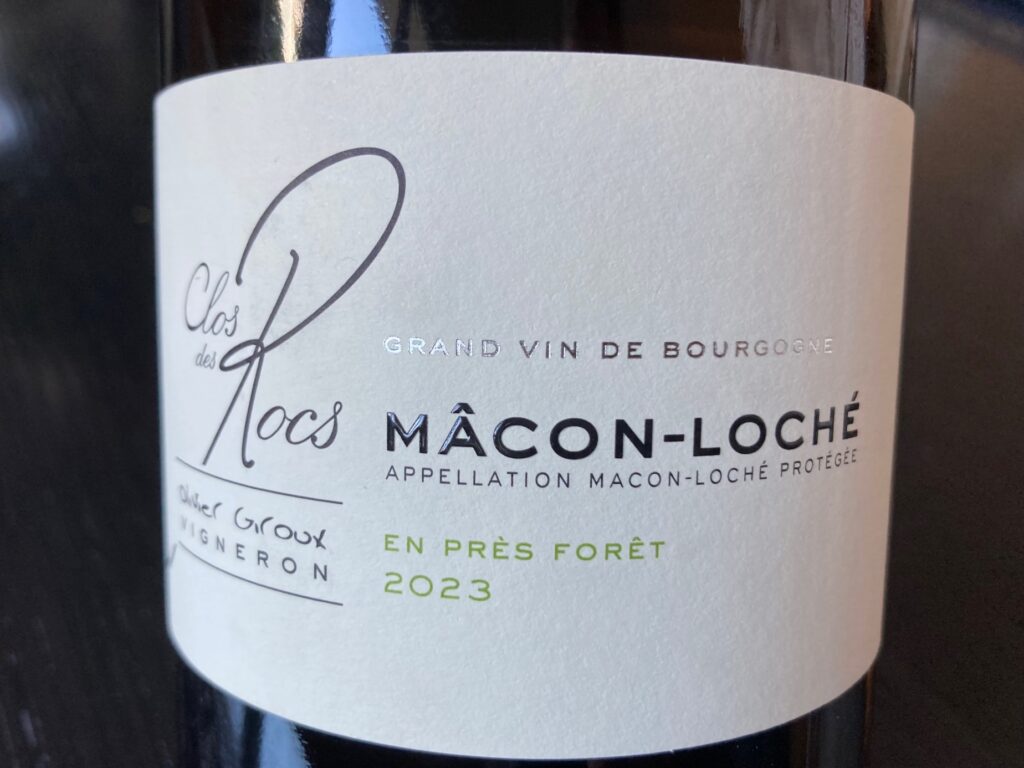
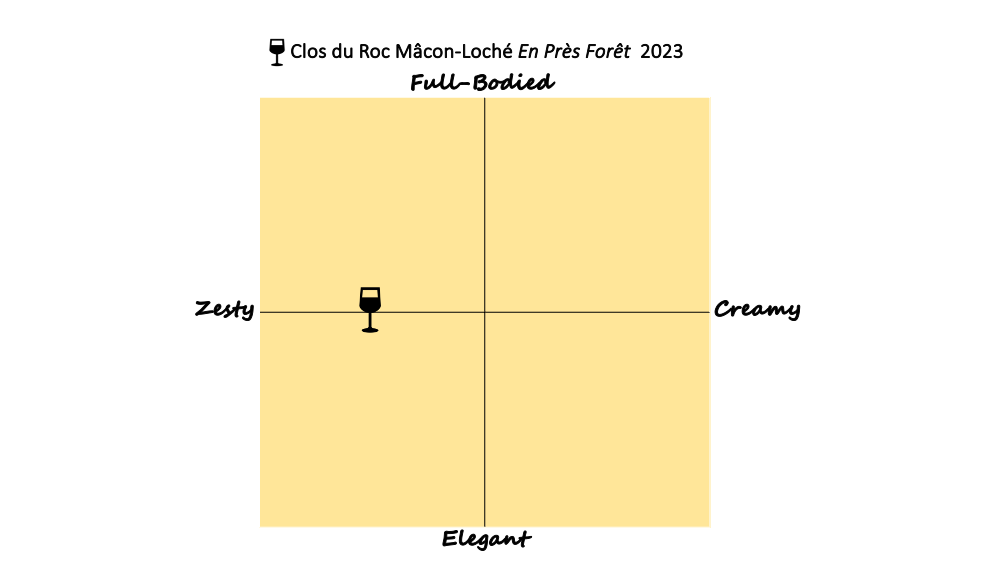
South and west of the French town of Mâcon in southern Burgundy lies the village of Loché. The surrounding vineyards of sandy, stony soils (with little topsoil) produce the well-regarded Pouilly-Fuisse and Pouilly-Loché Chardonnays. The less-well-placed vineyards in the area qualify as village wines, e.g. Mâcon-Loché. Yet in the capable hands of vintners like Olivier Giroux, even the village wines of Mâcon-Loché can become reference wines. Giroux’s Clos du Rocs Mâcon-Loché En Près Forêt is such a wine. Vinified from the fruit of 40 yr-old vines growing at an altitude of ~240 m, the wine is elegant and precise, showing intense citrus fruit coupled with a food-friendly saline streak. Ninety percent of the fruit is fermented in stainless, while 10% ferments in 500 liter used oak barrels. One cannot taste nor smell oak in the finished wine. As such, of the 3 Chardonnays reviewed in this post, this delicious Mâcon-Loché is the most contrasting pairing.
Elio Grasso Educato Chardonnay IT 2022 (~ $30)
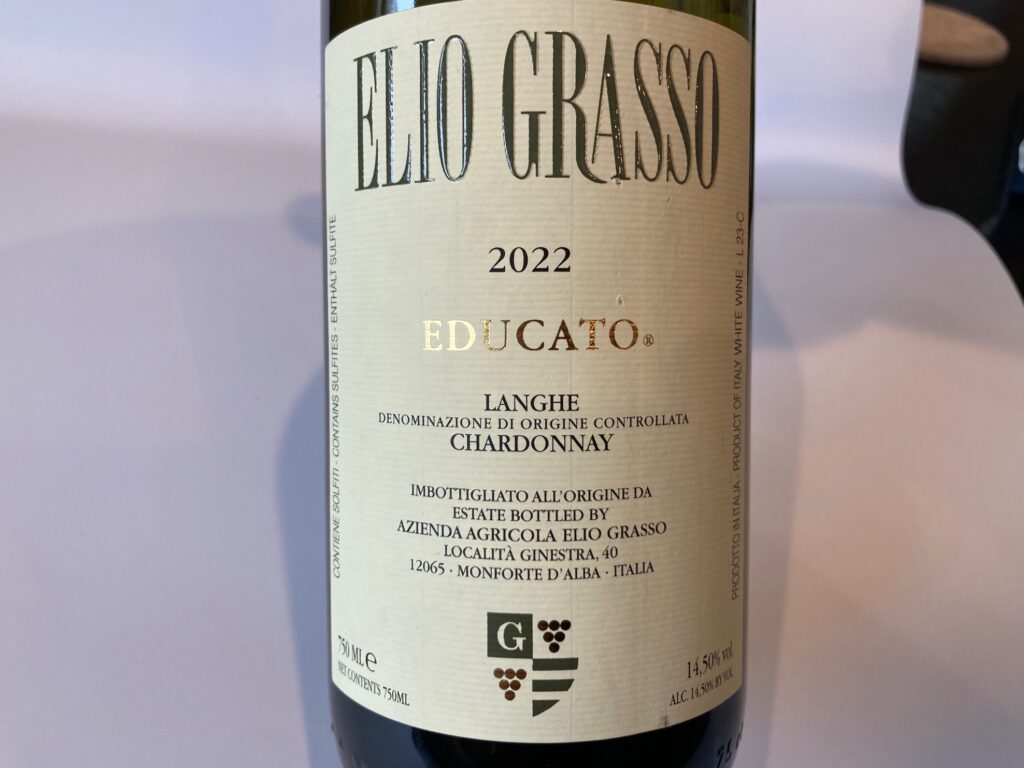
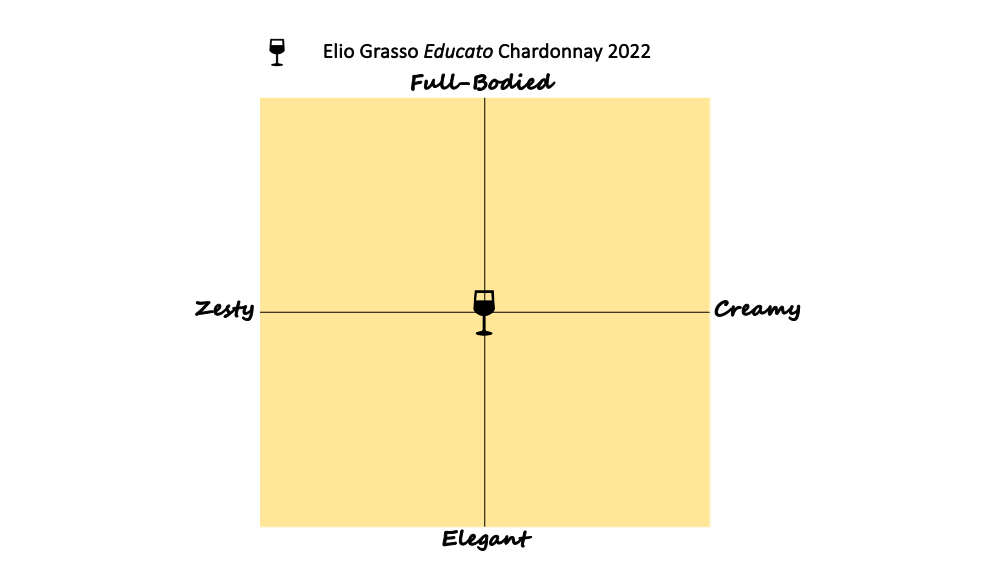
From the Langhe region of northern Italy, (think Piedmont) Grasso’s Chardonnay fruit grows at an elevation of 400-450 m on limestone soils with south-southeast exposure. The vines average 30 years in age. This Chardonnay differs from the other two in the fermentation regimen: about half of the fruit ferments and ages in older French oak barrels, while the other half sees only stainless steel. We think this strikes the perfect balance for this Leek & Potato Soup: palate-cleansing citrus acidity (from the high elevation limestone) coupled with a richness (from the neutral oak) to stand up to the soup.
By no means do these 3 Chardonnays close the book on pairing with the soup. Many white wines from Spain, the Loire, even Argentina can pair with this recipe, but we chose to focus on Chardonnay, as well as illustrate that not all quality French Chardonnay have to cost 3 figures; it’s not just Barolo and Barbaresco that comes from Piedmonte; and Northern California can produce a Chardonnay that’s not over-oaked.
We hope you enjoy the soup this winter. Cheers and Happy New Year!
Leek & Potato Soup – Wine Pairing
Notes
This recipe is from Julia Child’s Mastering the Art of French Cooking, Vol. I
For the Water-cress variation of this soup, follow the above recipe. But before pureeing the soup, stir in 1/4 lb (about 1 packed cup) of water-cress leaves and tender stems. Simmer for 5 minutes. Then puree the soup and correct seasonings.
Ingredients
- 4 cups peeled, sliced Yukon Gold potatoes; we recommend you buy ~ 1.5 lbs of potatoes.
- 3 cups thinly sliced leeks, including the tender green parts; we recommend you buy about 1+ lb of leeks.
- 2 quarts of filtered water
- Scant 1 Tbsp salt
- 4-6 Tbsp heavy cream (or 2-3 Tbsp softened butter)
- Garnish: croutons or minced chives or minced parsley
Instructions
- Simmer the vegetables, water and salt together, partially covered, for 40 minutes or until potatoes are tender.
- Allow the soup to cool slightly, then process in batches in a blender or food mill until you achieve a lump-free velvety consistency. Add a bit of water if the soup is too thick based on your preference.
- Correct seasoning.
- Set aside uncovered until just before serving, then reheat to a simmer and stir in the cream or butter by the spoonful.
- Ladle into bowls, garnish and enjoy!

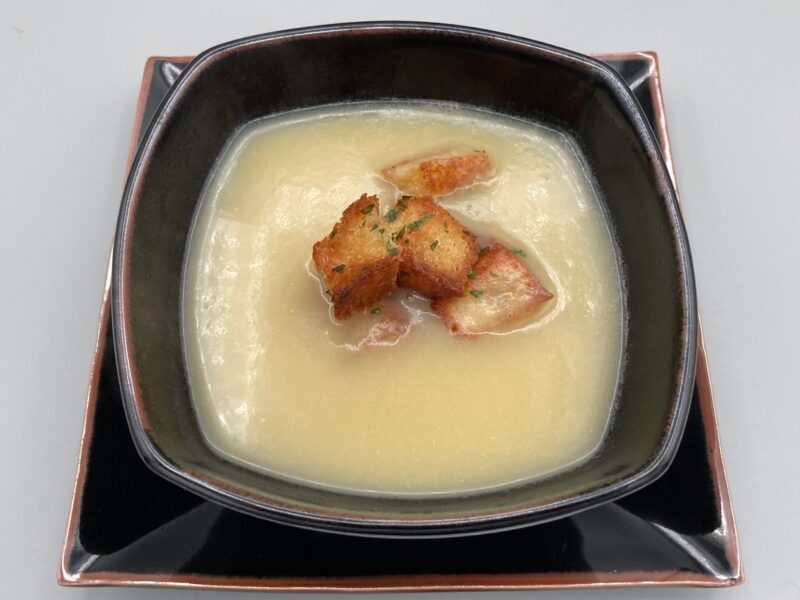
Thomas Lansen says
Mmmmm…..
Cindy Lowe Rynning says
This looks delicious!!! Comfort food with taste! Thanks, Steven!
Steven says
Thanks for commenting, Cindy. I am looking forward to your “tour” of the Duoro. My wife and I are booked for a Tauck cruise of the river in Sept ’26.
Michael Glicini says
love this recipe!
Steven says
Thanks, Mike. Hope all is well with you and family.
Thomas Lansen, MD says
Great stuff as always, Steve. Hope you and Trish were not affected by the fires.
Steven says
Thanks, Tom. We are well south of the impacted areas, but our hearts go out to those in the path of those hellfires.
Eric Sandberg says
Great analysis of the wines. Thanks for the update.
Steven says
Thanks for commenting, Eric. Your feedback is always welcome.